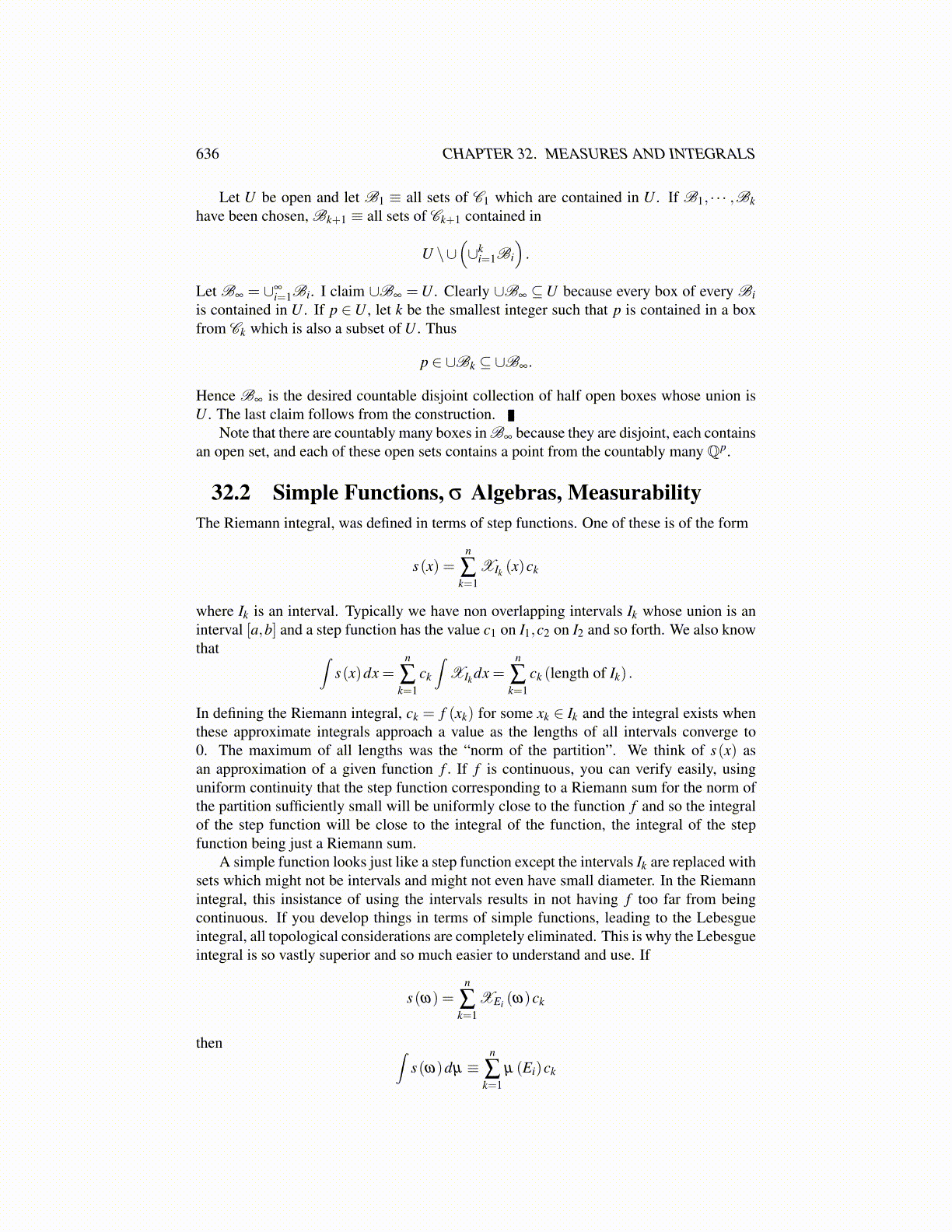
636 CHAPTER 32. MEASURES AND INTEGRALS
The messy term on the middle is measurable because it consists of countable unions and in-tersections of measurable sets. It equals f−1 ((b,∞]) and so this last set is also measurable.By Lemma 32.2.5, f is measurable.
A convenient way to check measurability is in terms of limits of simple functions.
Theorem 32.2.8 Let f ≥ 0 be measurable. Then there exists a sequence of nonneg-ative simple functions {sn} satisfying
0 ≤ sn(ω) (32.1)
· · · sn(ω)≤ sn+1(ω) · · ·
f (ω) = limn→∞
sn(ω) for all ω ∈ Ω. (32.2)
If f is bounded, the convergence is actually uniform. Conversely, if f is nonnegative and isthe pointwise limit of such simple functions, then f is measurable.
Proof: Letting I ≡ {ω : f (ω) = ∞} , define
tn(ω) =2n
∑k=0
knX f−1([ k
n ,k+1
n ))(ω)+2nXI(ω).
Then tn(ω)≤ f (ω) for all ω and limn→∞ tn(ω) = f (ω) for all ω . This is because tn (ω) =2n for ω ∈ I and if f (ω) ∈ [0, 2n+1
n ), then
0 ≤ f (ω)− tn (ω)≤ 1n. (32.3)
Thus whenever ω /∈ I, the above inequality will hold for all n large enough. Let
s1 = t1, s2 = max(t1, t2) , s3 = max(t1, t2, t3) , · · · .
Then the sequence {sn} satisfies 32.1-32.2. Also each sn has finitely many values and ismeasurable. To see this, note that
s−1n ((a,∞]) = ∪n
k=1t−1k ((a,∞]) ∈ F
To verify the last claim, note that in this case the term 2nXI(ω) is not present and forn large enough, 2n/n is larger than all values of f . Therefore, for all n large enough, 32.3holds for all ω . Thus the convergence is uniform.
Now consider the converse assertion. Why is f measurable if it is the pointwise limitof an increasing sequence simple functions?
f−1 ((a,∞]) = ∪∞n=1s−1
n ((a,∞])
because ω ∈ f−1 ((a,∞]) if and only if ω ∈ s−1n ((a,∞]) for all n sufficiently large.
Observation 32.2.9 If f : Ω →R then the above definition of measurability holds withno change. In this case, f never achieves the value ∞. This is actually the case of mostinterest.
Corollary 32.2.10 If f : Ω → (−∞,∞) is measurable, then there exists a sequence ofsimple functions {sn (ω)} such that |sn (ω)| ≤ | f (ω)| and sn (ω)→ f (ω).